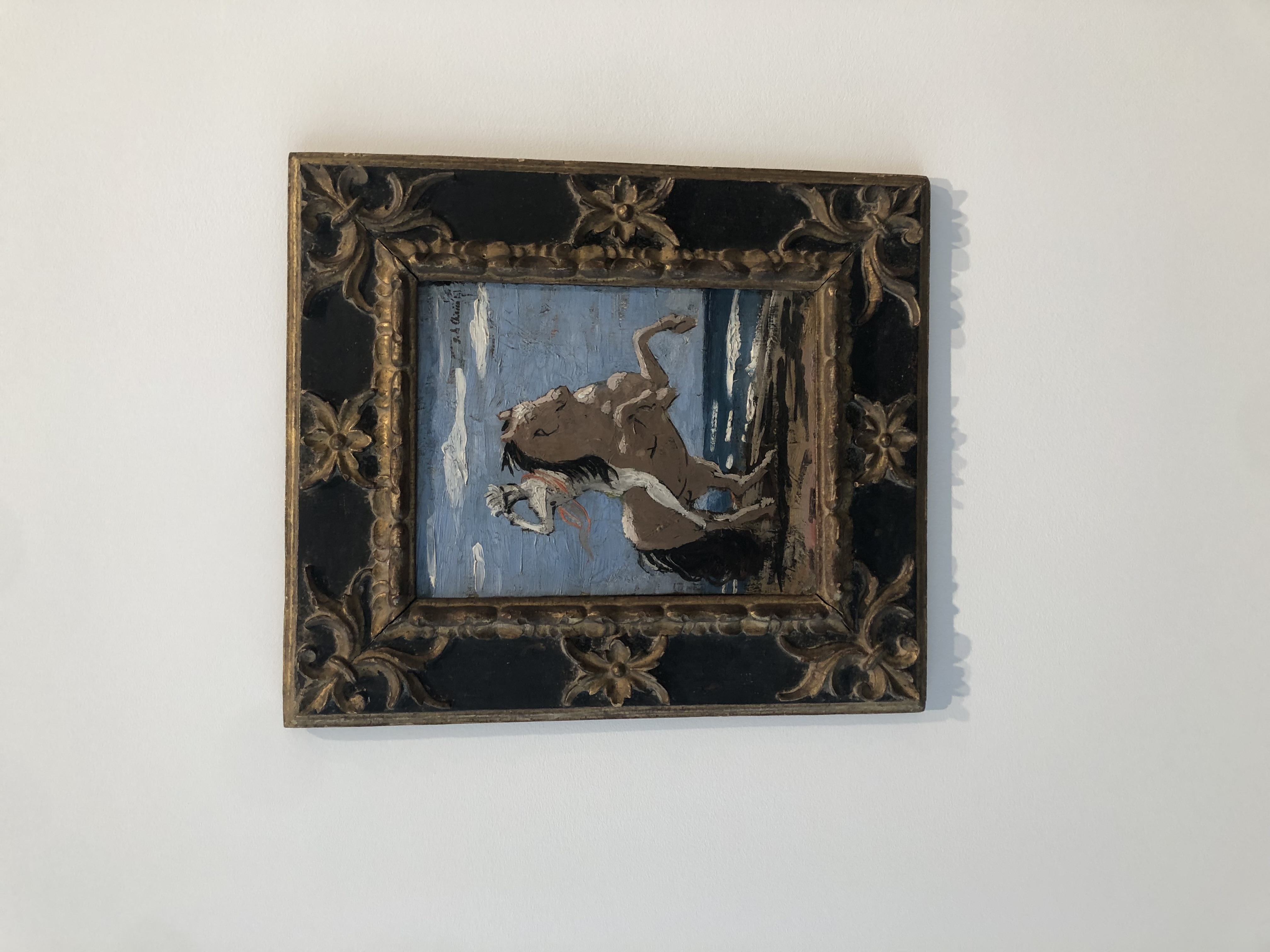At Eternity’s Gait
Giorgio de Chirico at Vito Schnabel Gallery
March 24 – July 28, 2023

The Italians had “denied history by 1910,” quipped Carl Einstein in reference to the Futurists’ iconoclastic manifestos. But by 1928, the year of Einstein’s statement, he saw that many of these same Italians had rethought their relationship to tradition: Their work now expressed “the equality of all history.” They would no longer castigate the art of the past but, rather, use it to structure their own period’s growing “aesthetic disorganization,” in the emblematic words of Carlo Carrà. To critic (and Mussolini’s mistress) Margherita Sarfatti, a studied engagement with the national heritage had both artistic and political outcomes: to purify present conditions, to strip them of foreign ornament, to coalesce them with the past in the name of progress. Tethered to both tradition and modernism, painting seemed a vital medium for this historical synthesis; so, too, did Fascism, which, per writer Ardengo Soffici, could “unify the experience of the past and the promise of the future.”
Einstein’s text concerns Giorgio de Chirico, in particular, and reproduces some of his then-recent work: paintings of horses and gladiators, Greek temples and beaches, the artist himself and his “receding chin.” This final barb belongs to André Breton, who, in 1926, disavowed de Chirico, citing an imperialist streak in the Italian’s so-called “return to order.” The intervening century has followed Breton’s lead; de Chirico’s work after 1919 garners much less attention than that which came before. Not so in “Horses: The Death of a Rider,” at Vito Schnabel Gallery, which presented 16 de Chirico oils dating from 1926 to 1970, each depicting at least one horse. The moods vary, from playful to somber, as do the artist’s techniques: colors flit from dull to exuberant; brushstrokes, from thin to muddy; reference points, from the 15th century (Uccello, Perugino) to the 19th (Delacroix, Böcklin). Yet, as ever, de Chirico employs a selective iconography with several pictures repeating a familiar antique setup: a flat shoreline, a distant temple, and scattered column fragments. Most of the horses are white and wear red sashes; some have a brown partner, a possible figure for the artist’s brother, Alberto Savinio — they identified with the horsemen Castor and Pollux — while others mingle with toga- or armor-clad men who try, and often fail, to tame them.

When not attacked or replaced by horses, de Chirico’s humans appear as if cast in roles or, otherwise, in plaster — hollow and generic. Not for nothing, the artist worked in theater and wrote about cinema during Italy’s Fascist period. Clocking the “false appearance” of historical films, he argued for the supremacy of painting, which, rather than accept its representational falsity, like film did, produced its own “true” past at each turn. “Nature depicted in a painting,” he wrote, “lives and vibrates in an absolutely different way than it does in reality.” Einstein had already argued that the artist’s turn to the past implied both an “anxious restoration” and the “strict structure” of dreams, that de Chirico’s oneiric images reveal the depth of their ideological conditioning (and its restorative fantasies) while, at the same time, denaturalizing it. It can be tempting to situate de Chirico’s references and repetitions — those fraternal horses return again with a sick cuteness in the final canvas on view — amid the debates over postmodernism that emerged around the time of his death in 1978 (and implicated Vito Schnabel’s father). Synthetic, nostalgic: It’s unsurprising that modernists then, as before, labeled de Chirico’s later oeuvre as reactionary kitsch. But that might miss the point. Often, his horses limn the shore; shedding the accouterments of battle, they face the incoming tide, the subtle but perpetual inconsistencies of the waves approximating history’s untimely rhythm.